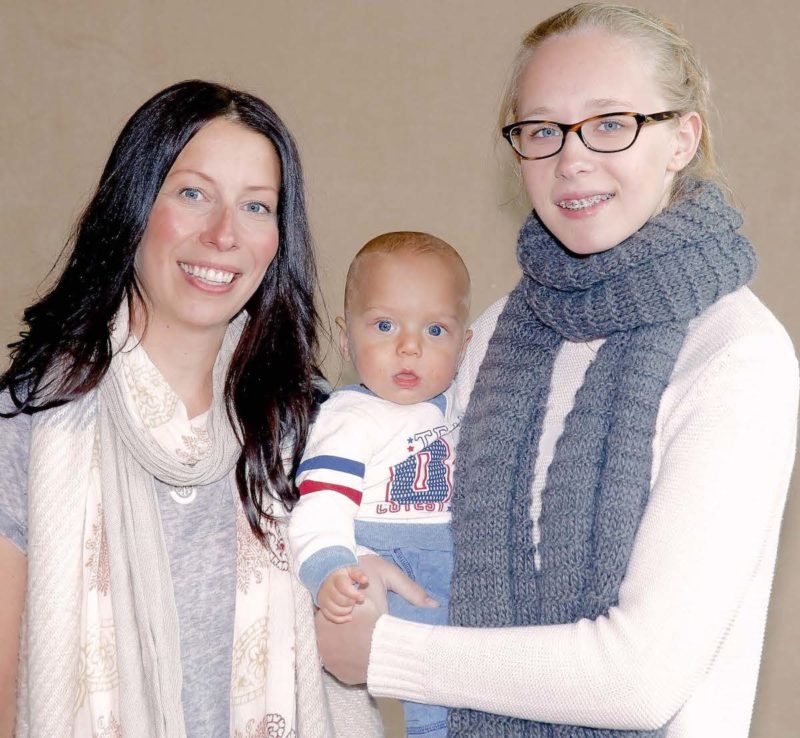Talking about your child's limb difference
As a parent you will find yourself talking to a wide range of people about your child’s limb difference. Determining how, when and who you will share news and information with is a very personal decision.
People will ask questions about your child and it’s a good idea to consider how you will respond to them. Some parents say that responding to questions allows them to positively educate people about limb difference, advise others about preferred language and ensure their child is included in the community.
Sharing news about your child
Some parents, who are aware they are having a child with a limb difference, choose to tell others prior to their baby’s birth while others decide to wait until the baby arrives. Parents who learn following their baby’s birth may delay telling others until they feel ready.
Talking to others about your child’s limb difference
Parents have different ideas about how to discuss limb difference. Some feel that it is not necessary to draw attention to their child’s difference because people are more similar than they are different. Others want to discuss their child’s limb difference to enhance inclusivity, acceptance and educate others. It is a good idea to decide on your approach early to help your child, family and friends understand how you want to talk about it.
In social situations it is not unusual for adults and children to stare, point, ask questions or offer advice. Sometimes adults and children may make comments that you feel are intrusive or inappropriate. Generally, people are not being deliberately hurtful, it’s because they don’t understand or have never met a person with limb loss.
It’s not unusual to struggle in these situations. However, when people do ask questions or make comments it’s a good idea to be prepared for how you will deal with it.
Remember that:
- when discussing limb difference in front of your child, they might be absorbing more than you realise
- if people ask questions it’s a good idea to use words that you are comfortable with
- speaking about limb difference can feel empowering as it’s a chance to educate others
- your child may want to assist you by showing their limb, their prosthesis or explain limb difference in their own way.

Talking to other children about your child
Children are naturally inquisitive and want to learn about the world around them. So, if a child meets another child (or adult) wearing a prosthesis or using a wheelchair they may be interested or confused. They may also stare, point, ask questions or seem worried.
When answering questions from a child, change the information you share and the language you use to suit their age to:
- explain why your child has limb difference
- highlight that your child can do all or most of the things that other children can do
- minimise any fears or concerns that other children have.
Some common questions asked by children include:
- “What’s wrong with Andy’s leg?”
- “Why is Jane’s arm different to mine?”
- “Johnny has no leg so does that mean I won’t have mine one day too?”
- “Why doesn’t Charlotte have a foot?”
Depending on the child’s age, and whether your son or daughter wants to be part of the conversation, there are several approaches you could use:
- diversion: “You’re right Mary, Andy’s leg is different to yours. But mine is also different to yours. How is mine different Mary?”
- highlight similarities rather than differences: “That’s right Sam, Jane’s arm is different to yours. But Jane can still do most of the things you can do. Jane loves to draw pictures and I heard that you like to draw pictures too? Jane also loves riding her bike, do you like riding bikes Sam?”
- reduce fears: “Peter, Johnny is missing part of his leg because he had an accident when he was young. It is very unusual for children to have accidents like that so you should try not to worry that it will happen to you. Did you realise that Johnny uses a prosthetic leg and this means he can ride his bike and play football.”
- educate children about limb difference (often used with older children). “That’s right Chris, Charlotte doesn’t have as many toes as you because she was born that way. But Charlotte can still do many of the things you can do, can’t you Charlotte?”
Helping your child to respond to questions
Your child will inevitably be asked questions about their limb difference, and you may not be around when this happens. Try to build confidence in your child so that they can handle questions themselves. You might also want to work together to develop responses to common questions in their own words – that way your child is more likely to feel comfortable when speaking to others.
Children often find interesting and humorous ways of responding to questions about their limb difference. Many children (and adults) are also known to use funny stories as well. Some common ones include:
- “A crocodile bit my leg.”
- “My arm got stuck in a hole and when I pulled it out my arm didn’t come out.”
- “It was eaten by ants.”
